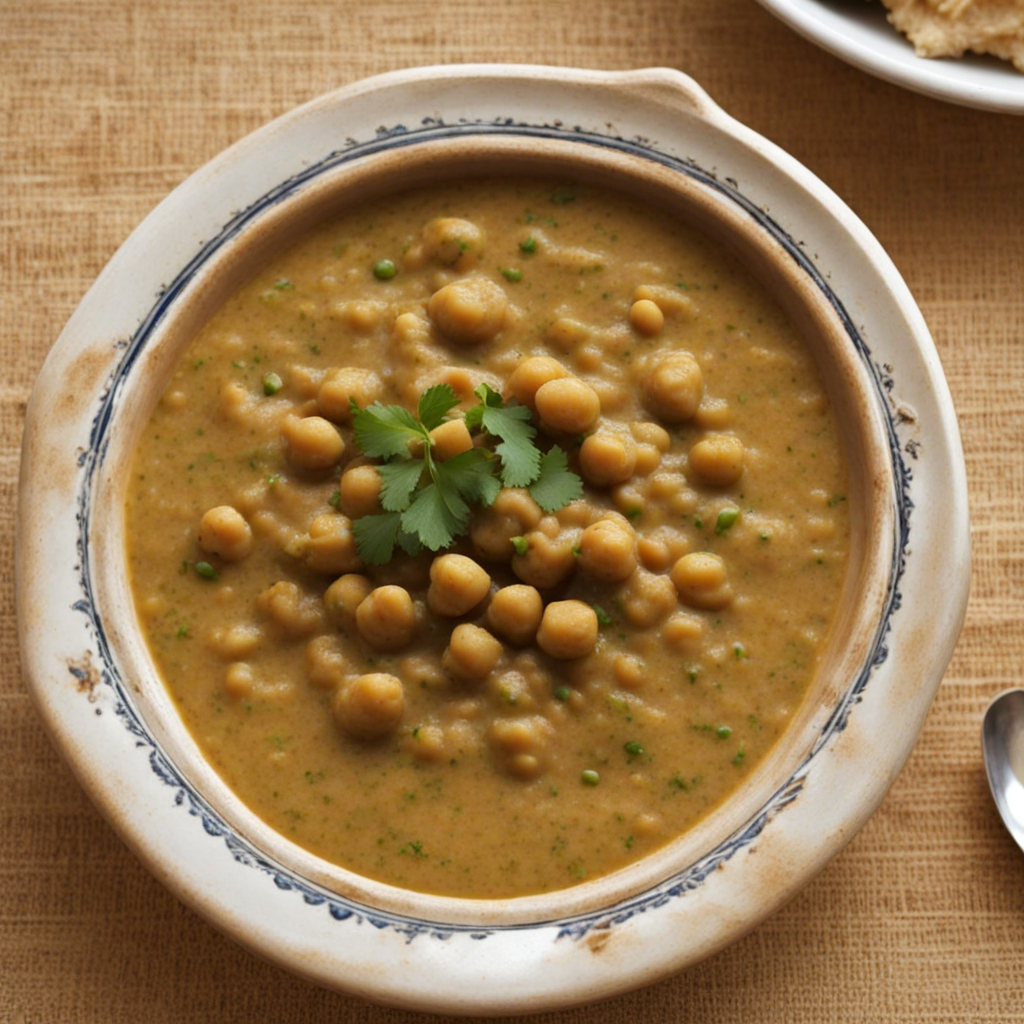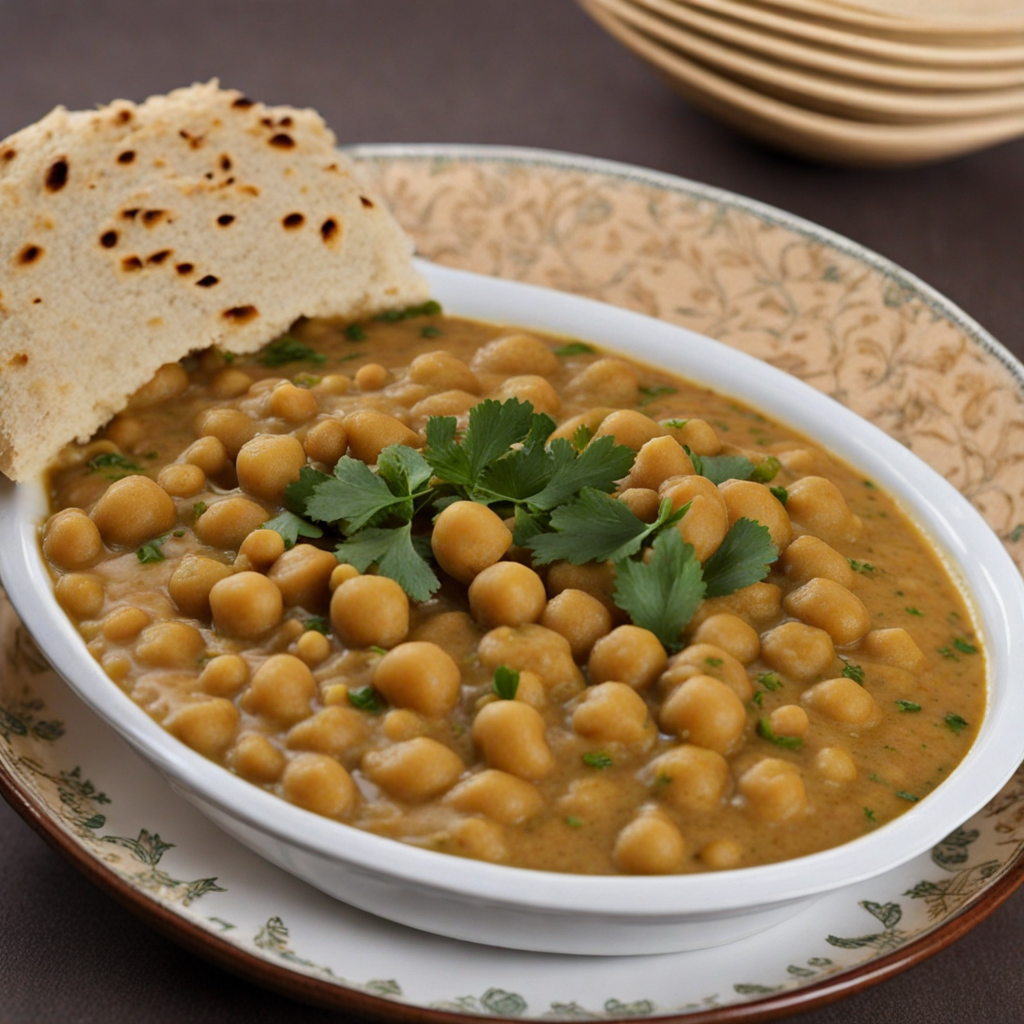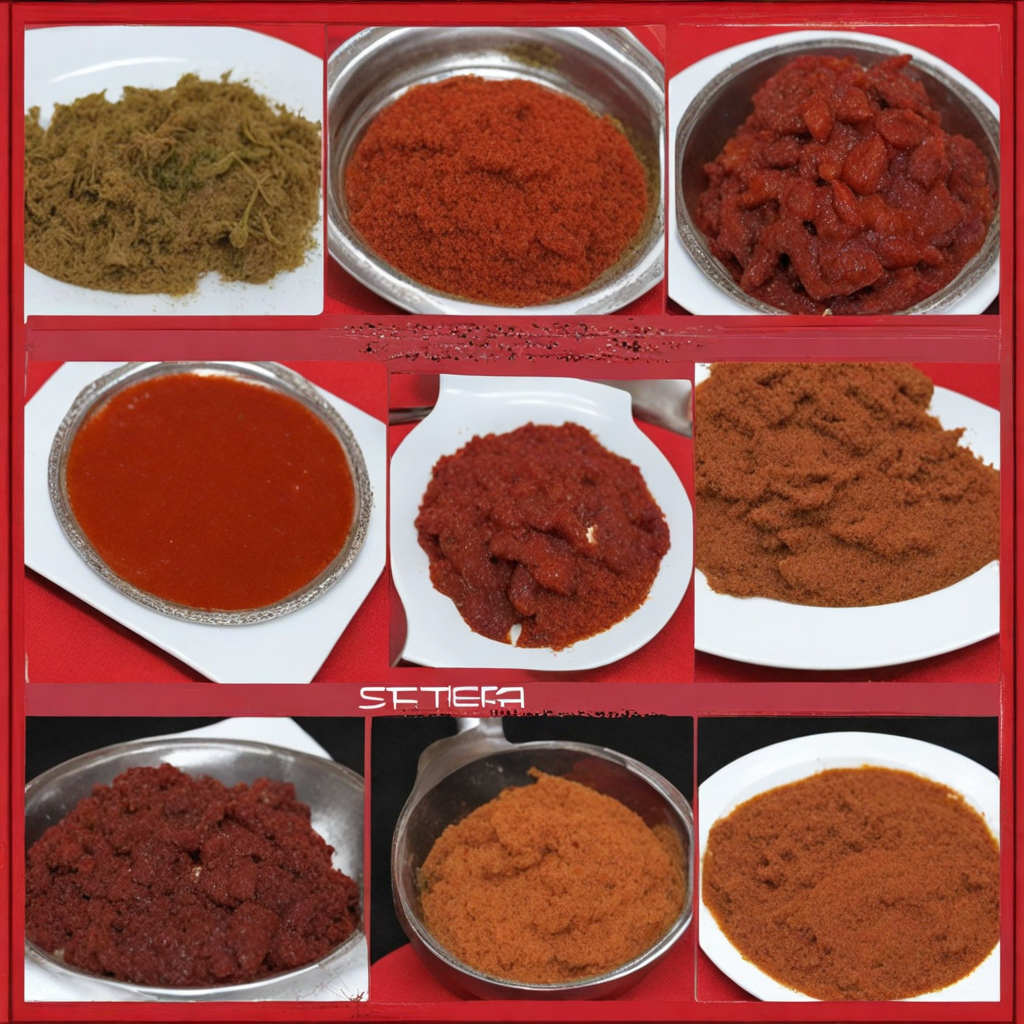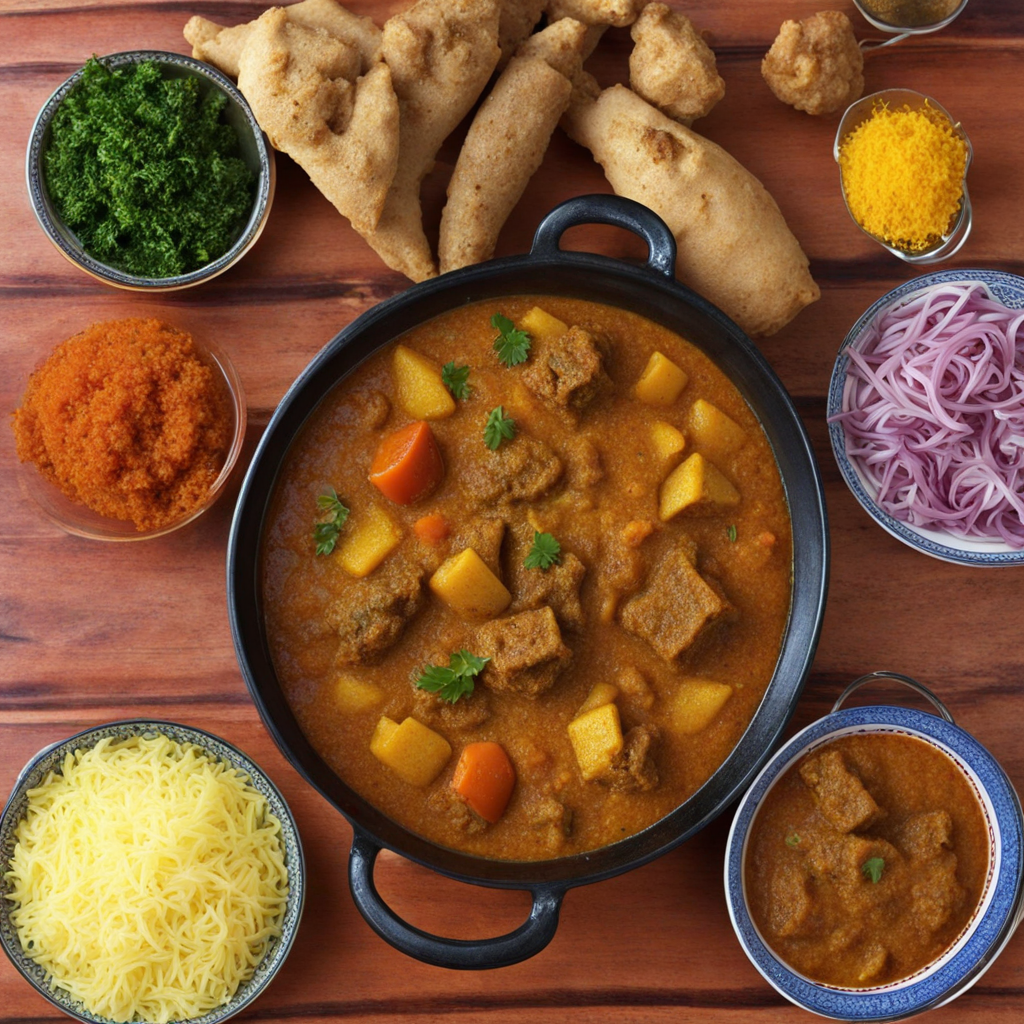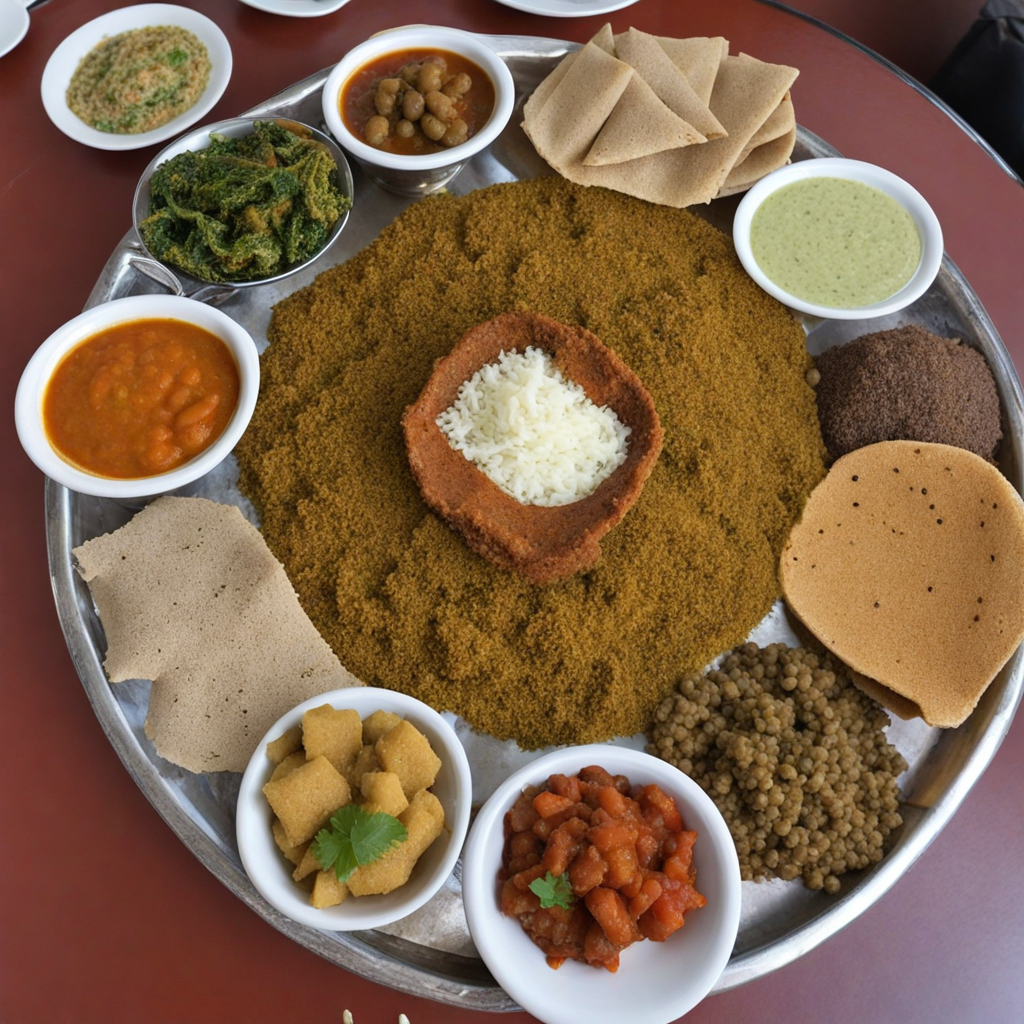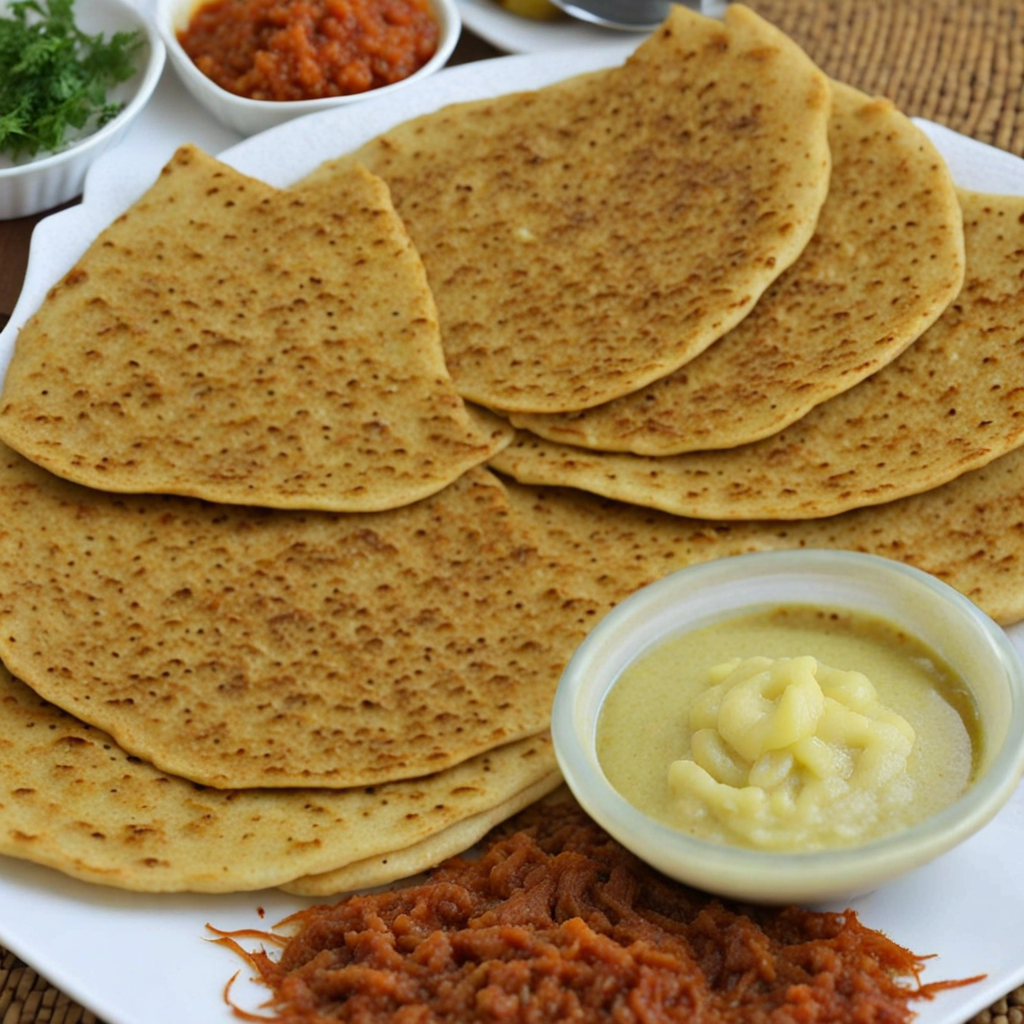Shiro
Shiro is a traditional Eritrean dish that embodies the rich flavors and culinary heritage of the region. This hearty stew is primarily made from ground chickpeas or lentils, which are simmered with a blend of spices like berbere, a spice mix that includes chili peppers, garlic, and other aromatic ingredients. The result is a creamy, savory concoction that is both comforting and satisfying. Shiro can vary in thickness, sometimes resembling a soup-like consistency, while at other times it may be denser, depending on personal preference and regional variations. The dish is often served with injera, a sourdough flatbread made from teff flour, which acts as both a side and a utensil. Diners typically tear off pieces of injera to scoop up the shiro, creating a delightful interaction between the textures of the soft bread and the velvety stew. The combination of shiro and injera offers a unique taste experience, where the tangy flavor of the bread complements the earthy notes of the stew. For those who enjoy experimenting with flavors, shiro can also be enhanced with additional ingredients such as onions, tomatoes, or even a drizzle of olive oil, adding layers of complexity to every bite. Shiro is not only a staple in Eritrean cuisine but also a symbol of communal dining and cultural identity. It is commonly enjoyed during special occasions and family gatherings, making it a dish that evokes warmth and togetherness. As you explore the flavors of shiro, you'll discover a dish that is not only nourishing but also steeped in tradition, inviting you to savor the essence of Eritrea with every mouthful.
How It Became This Dish
The History and Cultural Significance of ሽሮ (Shiro) in Eritrea Shiro, a traditional Eritrean dish, is a staple of the country's culinary heritage. This rich, flavorful stew made primarily from ground chickpeas or lentils, combined with spices and often served with injera (a sourdough flatbread), has deep-rooted connections to Eritrea’s history, culture, and society. Understanding shiro involves delving into its origins, cultural significance, and how it has evolved over time within the broader context of Eritrean and East African cuisine. Origins of Shiro The origins of shiro can be traced back to the ancient civilizations of the Horn of Africa, where legumes such as chickpeas and lentils have been cultivated for thousands of years. The domestication of these crops is believed to have occurred around 4000-5000 years ago, stemming from the rich agricultural practices of the region. The use of legumes in cooking is not only a reflection of the climatic conditions conducive to their growth but also a response to the nutritional needs of the local populations. In Eritrea, shiro is traditionally made from ground chickpeas or lentils, which are highly valued for their protein content. The dish stands out as a vegetarian option, aligning well with the dietary preferences of many Eritreans, particularly during fasting periods observed in the Orthodox Christian community. This aspect of shiro highlights the intersection of food, religion, and cultural identity in Eritrea, where dietary practices often revolve around religious observances. Cultural Significance Shiro is more than just a dish; it is a symbol of community, hospitality, and tradition. In Eritrean culture, food is an essential aspect of social gatherings and celebrations. Shiro is commonly served during family meals, communal feasts, and special occasions, embodying the spirit of togetherness. The act of sharing a meal, particularly one as communal as shiro served with injera, reinforces social bonds and family ties. Moreover, shiro holds a significant place in the daily lives of Eritreans. Its affordability and ease of preparation make it a popular choice among families, particularly in rural areas. The dish can be made with minimal ingredients, allowing it to be accessible to people of all socioeconomic backgrounds. In times of hardship, such as during the prolonged struggle for independence from Ethiopia, shiro became a source of sustenance and comfort for many Eritreans. Shiro is also emblematic of Eritrea's diverse culinary landscape. The country has a rich tapestry of ethnic groups, each contributing to the national cuisine. Shiro is enjoyed across various communities, including the Tigrinya, Tigre, and Saho peoples, with each group adding its unique spin on the dish. The spices used, the consistency of the stew, and the accompanying sides may vary, reflecting local ingredients and preferences. This adaptability showcases shiro’s role as a unifying dish that transcends ethnic boundaries while celebrating the unique culinary identities of Eritrean communities. Development Over Time The evolution of shiro mirrors the broader historical and social transformations in Eritrea. The dish has been influenced by various factors, including colonialism, migration, and globalization. During the Italian colonization of Eritrea in the late 19th and early 20th centuries, Italian culinary practices began to intermingle with local traditions. Ingredients such as tomatoes and garlic were introduced, which have since become integral to the preparation of shiro. In the post-independence era, as Eritrea sought to establish its national identity, food became a critical component of cultural revival. Shiro emerged not just as a dish of sustenance but as a symbol of resilience and pride. Eritreans began to celebrate their culinary heritage more consciously, with shiro taking center stage in numerous cultural events and festivals. The dish’s prominence in Eritrean society has positioned it as a culinary ambassador, showcasing Eritrean flavors to the world. As globalization has progressed, shiro has also adapted to contemporary tastes and trends. Eritrean diaspora communities have played a crucial role in this transformation. In cities across the globe, Eritrean restaurants have emerged, introducing shiro to diverse audiences. These establishments often put their unique spin on the dish, experimenting with different legumes, spices, and cooking methods while maintaining the essence of traditional shiro. The global popularity of shiro has not only elevated its status but has also fostered a greater appreciation for Eritrean cuisine as a whole. Conclusion In summary, shiro is much more than just a dish; it is a representation of Eritrea’s rich cultural heritage, community values, and historical resilience. From its ancient origins rooted in the agricultural practices of the Horn of Africa to its modern adaptations in the global culinary scene, shiro embodies the spirit of Eritrea. It reflects the country’s capacity to embrace change while honoring its traditions, making it an essential part of Eritrean identity. As Eritrea continues to navigate the complexities of modern life, shiro remains a beloved comfort food, a staple on dining tables, and a symbol of unity among its people. Whether enjoyed in a bustling restaurant in Asmara or shared among family members in a rural village, shiro serves as a reminder of the power of food to connect individuals, celebrate heritage, and nourish both body and soul.
You may like
Discover local flavors from Eritrea


